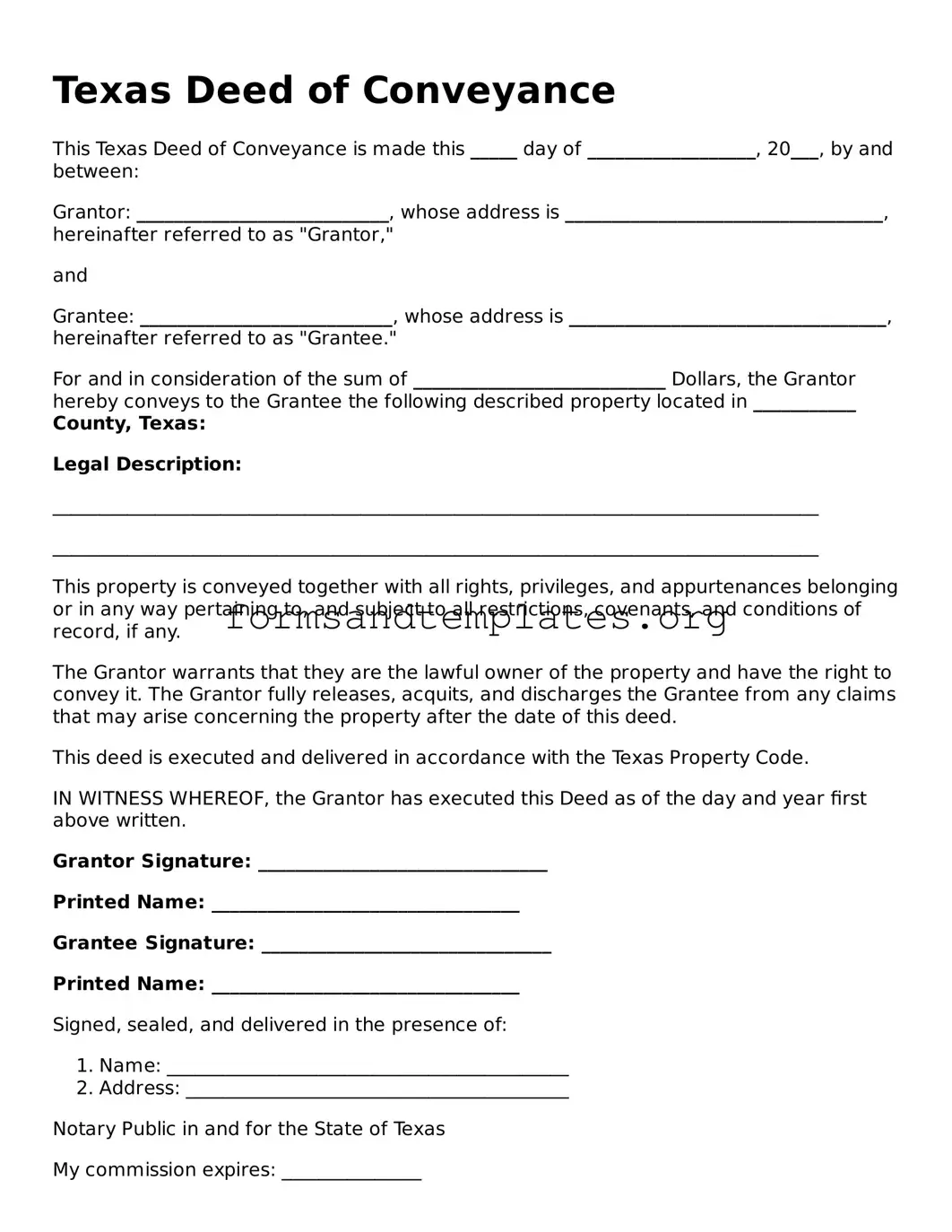Texas Deed of Conveyance
This Texas Deed of Conveyance is made this _____ day of __________________, 20___, by and between:
Grantor: ___________________________, whose address is __________________________________, hereinafter referred to as "Grantor,"
and
Grantee: ___________________________, whose address is __________________________________, hereinafter referred to as "Grantee."
For and in consideration of the sum of ___________________________ Dollars, the Grantor hereby conveys to the Grantee the following described property located in ___________ County, Texas:
Legal Description:
__________________________________________________________________________________
__________________________________________________________________________________
This property is conveyed together with all rights, privileges, and appurtenances belonging or in any way pertaining to, and subject to all restrictions, covenants, and conditions of record, if any.
The Grantor warrants that they are the lawful owner of the property and have the right to convey it. The Grantor fully releases, acquits, and discharges the Grantee from any claims that may arise concerning the property after the date of this deed.
This deed is executed and delivered in accordance with the Texas Property Code.
IN WITNESS WHEREOF, the Grantor has executed this Deed as of the day and year first above written.
Grantor Signature: _______________________________
Printed Name: _________________________________
Grantee Signature: _______________________________
Printed Name: _________________________________
Signed, sealed, and delivered in the presence of:
- Name: ___________________________________________
- Address: _________________________________________
Notary Public in and for the State of Texas
My commission expires: _______________
